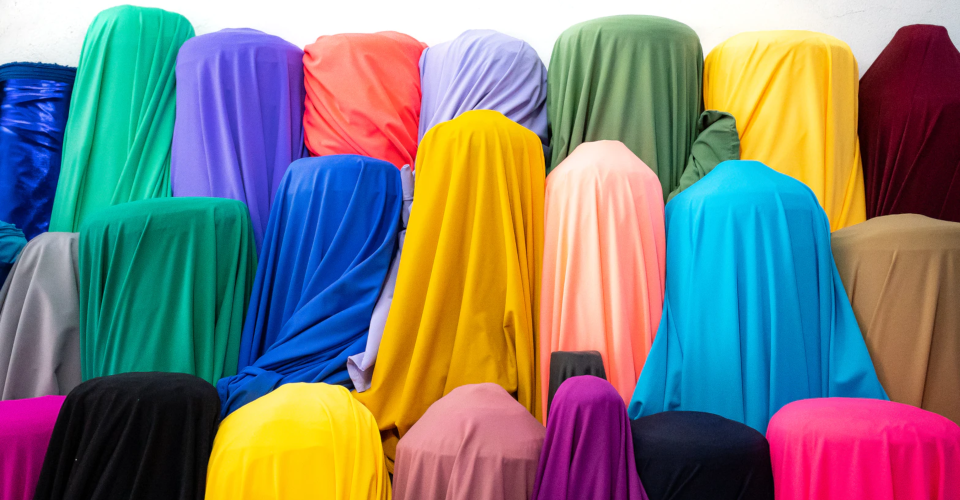Laser Cutting of Fabrics and Textiles – Simple Guide
Like other modern manufacturing methods, laser cutting and engraving technology aren’t just restricted to industrial or commercial applications. In the right hands, it can also be a very good creative tool. One only needs to look at the assortment of laser cut jewelry and greeting cards to realize the potential of this technology.
Laser cutting has also started to become a force to be reckoned with in the fashion industry. It may be a huge departure from more traditional methods, but the results of laser cutting in fabrics and textiles have been undeniably impressive so far.
How does laser cutting of fabrics and textiles work?
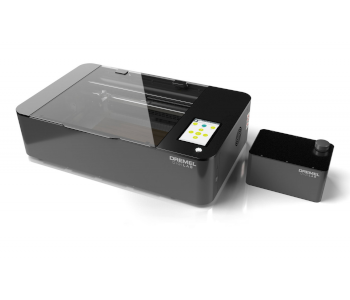
As the name implies, this technology involves the use of a high-powered laser to make clean and precise cuts on fabrics and textiles. Laser cutting machines use CNC technology and rely on digital files as a reference, making them highly automated and more reliable in terms of precision and repeatability. Although there are different types of lasers used for similar applications, CO2 lasers are most preferred for fabrics and textiles.
The accuracy of laser cutting is made possible through the concept of laser optics. The light generated by the laser head is focused via the focal lens to a very small point. In some cases, this point can be as small as 5 micrometers – that’s less than 1/100 of a millimeter. This means that laser cutters can recreate cuts and details down to this size. This level of accuracy is simply not achievable using traditional methods that rely on more mechanical cutting tools.
For one-off pieces, laser cutting of fabrics and textiles is typically done using a standard desktop-scale laser cutter. This processes workpieces individually with an enclosed cutting area. Although such a setup offers no automated means for swapping in new material, they are much less expensive and easier to operate.
In industrial-scale settings, machines used for laser cutting of fabrics are specially designed for maximum throughput. Instead of a desktop-scale machine that processes workpieces by batch, these machines typically have the fabric laid down on a moving conveyor track that allows for continuous processing. The actual laser cutting is done in a large format cutting table.
No matter the setup, the superior levels of accuracy and precision make laser cutting one of the most reliable options available, whether for fabrics or otherwise. It’s an almost fully automated process that requires no tooling changes or frequent operator intervention. A lot of laser cutters offered nowadays are turnkey machines which can be easily integrated into any existing manufacturing process.
Benefits of laser-cut fabrics and textiles
Whether it’s for large-scale manufacturing or the creation of artistic pieces, laser cutting offers a lot of unique benefits. When leveraged to their full extent, these advantages can make the investment for a laser cutter easily justifiable.
Design freedom
Creativity and artistic flair are very important in the world of fashion. If a technology speeds up manufacturing but hinders creative output, then what’s the point? Fortunately, this isn’t the case for laser cutting.
Laser cutters are an offshoot of CNC technology, which means that they only rely on digital files as reference. In most cases, a vector image is enough for a laser cutter to use as a pattern. This vector image is then converted into a machine algorithm that dictates the movement of the various components of a laser cutter.
The dependence on digital files means that patterns for laser cutters can be created in just about image editing program. The accuracy of laser cutters also means that very small details can be recreated faithfully. This opens up huge possibilities in terms of design and can very well revolutionize the field of fashion design.
High level of precision
As mentioned, laser cutting is an almost fully automated process. The same design can be reproduced in different types of fabrics, requiring only minor changes in laser parameters. Free from the imperfections of human intervention, laser cutting provides better repeatability for large-scale production.
Despite the significant capital to purchase and operate a laser cutter, it often turns out to be a more economical option. Laser cutters require less manpower and reduced training time. They also lead to lower rejects, which should generally improve profitability for a textile manufacturing company.
Sealed fabric edges
In simple terms, the high-powered laser burns the fabric at the point where it makes contact. This results in creating cuts that are clean while simultaneously sealing the edges of the cuts. The sealed edges prevent the fabric from getting frayed and enhances the overall visual appeal of the finished product. In laser cutting, all cuts are deliberate – there should not be a single frayed edge left out accidentally.
Versatile compatibility
Versatility is a major strength of laser cutting technology. The same laser head can be used for a variety of fabrics – linen, nylon, hemp, cotton, polyester, and denim among others – with just minor changes to its parameters. Even delicate fabrics like silk and lace can be flawlessly cut by using lasers.
Moreover, no tooling changes need to be made to a laser cutting machine when changing over between different fabrics and shapes. This reduces the cost of having to buy different cutting tools and saves on the time spent during production when shifting between products.
Non-contact
A unique characteristic of laser cutting is that it’s a completely non-contact process. No cutting tool touches the fabric, and the fabric does not need to be clamped or secured to the cutting table. Few moving parts mean less maintenance needed for the machine and reduced wear and tear for the tools.
Since no rugged tool comes into contact with the fabric, there are fewer chances of it getting damaged or having unintended marks. This is particularly important in high-end fashion design where expensive or delicate fabric is frequently used.
Some examples of fashion pieces made via laser cutting
The best way to demonstrate the capability of laser cutting for fabrics is by showing it off, so we have compiled a list of the most high-profile dresses and fashion pieces that have been made using laser cutting.
Vera Wang Laser Cut Bridal Dress

Vera Wang is a designer best known for her iconic wedding dresses, so it’s no surprise that this creative and innovative mind has brought over laser cutting technology to her line. The Vera Wang bridal dresses have proven to be a great exhibit of how lasers can cut very precise details on a piece of fabric as delicate as silk. Having a major designer vouch for the technology has also been a huge boost for the laser cutting industry and has helped it gain more mainstream popularity.
YDX Women’s Workout Top with Laser Cut Back

In some cases, the patterns created by laser cutting can also be functional on top of being fashionable. This is demonstrated by this women’s workout top by YDX with a shredded pattern at the back created via laser cutting. The pattern gives the top a bit of a rugged edge – an “attitude,” if you may. It also enhances airflow inside the top, making it a lot easier to cool off after a workout.
Since the pattern was laser cut, the cut edges run no risk of getting frayed even during constant motion. Considering how thin the remaining strands of fabric are, one could argue that the pattern of this workout top can only be reliably created via laser cutting.
Cheapcotton Women’s Laser Cut Star Mesh Tee
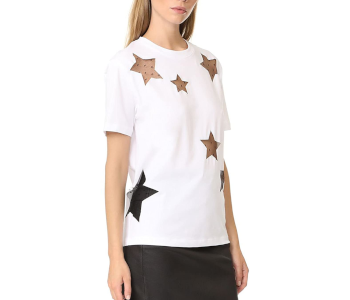
Laser cutting isn’t a technology or style that can only be used for high-fashion pieces. With the design freedom it provides, laser cutting can also be used to create designs that are more peculiar than usual. This standard tee with large cut-out stars is a great example.
It’s just a white tee with large holes cut out in the shapes of stars, but the use of laser cutting undoubtedly elevates the quality of the design. You can also see how clean the cuts were made. It might not be a fancy shirt but we’re pretty sure it appeals to a lot of people.
Sangria Women’s Shift Dress
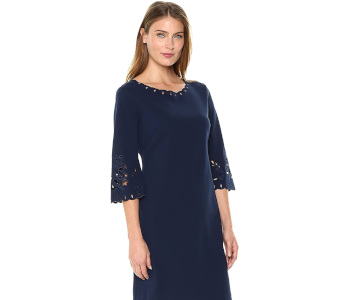
Just because you can laser cut huge holes in clothes doesn’t mean you have to do it all the time. That was probably the thinking behind this shift dress from Sangria. The laser-cut details in the sleeves and neckline of the dress may be subtle, but they certainly add a touch of elegance. These eyelet details would have taken a lot of work had they been done by hand.
Cole Haan Men’s Grandpro Rally Laser Cut Sneakers
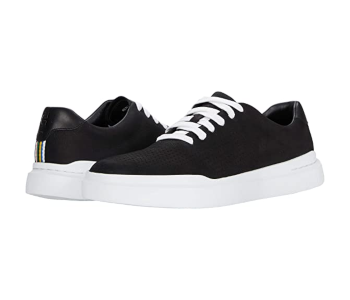
Laser cutting does not need to be restricted to skirts or tops to make a fashion statement. As this pair of Cole Haan sneakers shows, laser cutting can also make really interesting shoe designs. The perforations on the upper surface of the shoes are done with immaculate precision, giving it a unique visual appeal while enhancing breathability.
Anjee Kids Room Curtains with Laser Cutting Stars
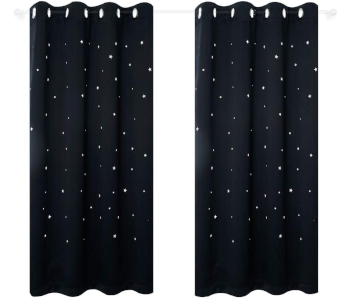
This set of curtains for kids is another example where form meets function. Using laser cutting technology, very small stars have been perforated into the blackout fabric of these curtains. When the morning sun shines through the curtains, it creates the appearance of bright stars against a dark backdrop. That would certainly be an interesting way to wake up.
As this small selection of laser cut products shows, the technology is useful not just in high-end fashion pieces but also in clothes and fabric products that people ordinary people like you and me can buy. The technology may be fancy, but it’s also economical and practical.
Final thoughts
Many industry experts in manufacturing have long-held beliefs that lasers are the future. It’s hard to argue with that affirmation given the reliability and versatility of laser technology.
One thing we haven’t mentioned yet is the fact that the same CO2 laser that can cut fabric can also cut other non-metal materials like wood and glass. There is probably not a single cutting tool that has the same diversity in terms of compatibility with materials.
In the field of fashion and fabrics, the biggest advantage of CO2 lasers is that it produces extremely precise design elements without subjecting the fabric to stress or abuse. This greatly enhances the throughput of large-scale materials. Designers of one-off fashion pieces probably appreciate the design freedom that the technology offers as well.

